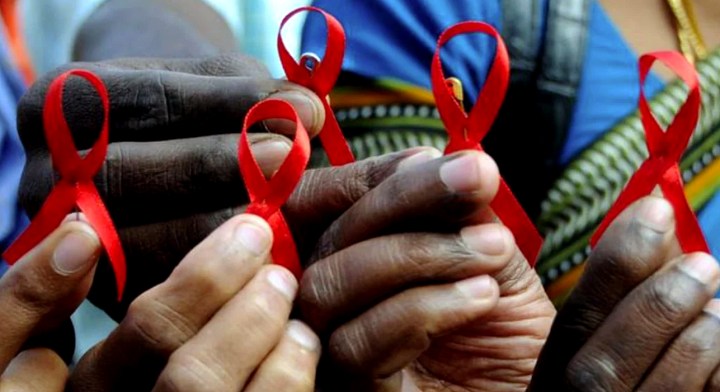SPOTLIGHT
Amid budget constraints, tough choices lie ahead for SA’s HIV response

Around 13% of South Africa’s population is living with HIV and the country has the world’s largest HIV treatment programme. The country’s finances are, however, under huge pressure and significant cuts were recently announced to the government’s HIV budget. We look at what a new HIV Investment Case tells us about the possible paths forward.
About 5.8 million of the roughly 7.8 million people living with HIV in South Africa are taking antiretroviral therapy (ART). The vast majority are accessing it through the public sector where medicines are fully paid for by the government. HIV treatment is provided in the public sector within a broader package of HIV prevention, treatment and care services.
An estimated $25-billion is spent annually on the country’s HIV response — mainly from the government, but with substantial contributions from the US President’s Emergency Plan for Aids Relief (Pepfar) and the Global Fund to Fight Aids, Tuberculosis and Malaria.
Despite its high absolute cost, investment in HIV remains a no-brainer. HIV investments in South Africa deliver significant health benefits, avert millions of deaths and allow people to live healthier and fuller lives. HIV investments also deliver significant economic returns, allowing people to remain in school, remain employed, and earn an income. A recent report by Economist Impact estimated that every dollar invested into the HIV response in South Africa between 2022 and 2030 will deliver a return on investment of $7.
However, despite the strong returns on HIV investments, the reality is that there is limited money available to support the country’s HIV response and that funding is projected to shrink in future years.
South Africa is grappling with a reduced budget for public spending due to a combination of factors, including lower-than-expected tax revenue and weak economic growth. The budgets for health and other social services are facing cuts, including a R1-billion reduction in financing for the country’s HIV response.
Given this funding crunch, good planning and prioritisation are essential to maximise the impact of the money we do have for HIV. To this end, the University of Witwatersrand’s Health Economics and Epidemiology Research Office (HE2RO) provides valuable insight into how spending can be allocated to maximise impact in its annual South African HIV Investment Case. HE2RO shared provisional findings from its 2023 report with Spotlight ahead of its expected publication in the coming weeks.

(Image: Courtesy Lise / HE2RO / Spotlight)
According to HE2RO, the total budget for South Africa’s HIV response is about R30-billion a year. This includes spending by the government, as well as R7-billion from Pepfar and R1.4-billion from the Global Fund. While funding is limited and facing cuts in coming years, the research office found that the current budget still provides room to scale up several services and interventions that are required to put the country on track to end the HIV epidemic. (Note that cost and budget are not perfectly aligned and that these numbers are based on the HIV portion of the relevant conditional grant and exclude other sources of government funding.)
What interventions are most cost-effective?
The 2023 HIV Investment Case considers the potential impact, cost-effectiveness and affordability of scaling up existing interventions and introducing several new interventions to South Africa’s HIV response. New interventions considered in the 2023 Investment Case include the hiring of dedicated staff to improve ART linkage and retention and the roll-out of long-acting HIV prevention injections (in the form of CAB-LA/long-acting cabotegravir).
“We put all these interventions into our model and then we look for the most cost-effective interventions per life-year saved added to our baseline,” explains Dr Lise Jamieson, a senior researcher at HE2RO.
One of the most useful things about the Investment Case is that it identifies which of the many possible interventions provides the greatest bang for the buck. Some key preliminary findings here include:
- Condoms: The new Investment Case finds that condom provision remains the most cost-effective intervention in the toolbox of interventions available to combat HIV. Currently, the Department of Health distributes one billion condoms per year; the Investment Case recommends that the department expand this to 1.3 billion per year. “Increasing condom provision is cost-saving. It is highly effective. It is really cheap,” Jamieson says.
- Linkage intervention: Preliminary results show that the introduction of a linkage intervention that helps more people diagnosed with HIV to start and stay on treatment is necessary to meet SA’s HIV targets and that the roll-out of such an intervention nationally is both cost-effective and affordable.
- HIV testing: Preliminary results show that scaling up targeted testing for infants and children at 10 weeks, 18 months, and for adolescents is cost-effective and affordable. Preliminary results also show that there is room in the existing budget to scale up the provision of HIV self-testing kits from the current baseline of 333,000 per year to one million (testing kits are typically provided for use by partners of people who are living with HIV).
- Medical male circumcision: Scaling up medical male circumcision beyond current baseline rates is not affordable within the current budget, according to preliminary results from the Investment Case. “Medical male circumcision is already quite high. In 2023 we had about 380,000 circumcisions; this just keeps declining as we run out of people to circumcise,” Jamieson says.
- Prevention pills and injections: The most worrying finding of the HIV Investment Case is that scaling up HIV prophylactic treatment is unaffordable under the current budget, if we also want to scale up interventions like HIV treatment and HIV testing. For HIV prevention pills (taken daily), the unaffordability is a consequence of budget constraints. For HIV prevention injections, unaffordability is a consequence of both budget constraints and the high cost of CAB-LA.
Previous research by HE2RO has shown that CAB-LA will not be cost-effective compared to prevention pills unless the price drops to $9-$15 (R170-R280) per injection. CAB-LA is currently being offered to South Africa at between R540 and R570 per shot. “If we had a higher budget, we could scale up other HIV services further,” Jamieson says, adding that at its current price, “CAB-LA is one of the least cost-effective interventions that we could scale up.”
Limited resources holding us back
Preliminary results from the Investment Case show that while rolling out the full gamut of potential interventions to combat HIV would allow South Africa to end its HIV epidemic more quickly, this level of intervention is not feasible within available resources. While available resources do provide space to introduce and scale up several interventions that will put the country on track to end its HIV epidemic, the researchers found that current spending levels are insufficient to put South Africa on track to end the HIV epidemic by 2030.
Ending the HIV epidemic by 2030 is a Sustainable Development Goal (SDG). To achieve this SDG, UN member states have committed to reducing HIV cases and deaths by 90% from 2010 levels.
UNAids has also set targets required to end the HIV epidemic. These include ensuring that by 2025, 95% of people living with HIV know their status, 95% of people living with HIV who know their status take treatment, and 95% of people taking treatment are virally suppressed (and therefore unable to transmit HIV).

(Image: Courtesy Lise / HE2RO / Spotlight)
Ensuring 95% of people with HIV know their status
South Africa is on track to exceed the target of ensuring that 95% of adults with HIV know their status by 2030, according to the Investment Case. This has been achieved through widely available HIV testing services. “HIV testing in the general population is already quite high … we are doing almost 16 million tests per year,” Jamieson says.
While South Africa is expected to exceed the target of ensuring 95% of adults with HIV know their status by 2030, the target is not being met for infants and children living with HIV. According to the Investment Case, only 76% of SA children living with HIV will know their status by 2030 if the status quo of interventions remains.
To improve on this figure, the Investment Case recommends expanding HIV testing for infants and children at 10 weeks and 18 months, which the model demonstrates is cost-effective and affordable within available resources.
According to the provisional results, 80% of HIV-exposed children are currently tested at 10 weeks, but only 28% are tested at 18 months (testing is recommended at 10 weeks, six months, and 18 months).
The model found that expanding testing to reach 95% of HIV-exposed infants at 10 weeks and 18 months could improve HIV diagnosis rates in children to 85% by 2030. With even more resources (modelled as an unlimited budget), only 88% of children with HIV will be diagnosed by 2030 — meaning that for this population group, the 95% target will not be met.
Getting 95% of diagnosed people on treatment
According to the Investment Case, if the HIV response remains unchanged, by 2030, 84% of adults who know their HIV status in South Africa will have started treatment. It found that reaching the target of getting 95% of people who know their status on to treatment will require a national roll-out of an intervention focused on improving ART linkage and retention.

(Image: Courtesy Lise / HE2RO / Spotlight)
The researchers modelled the impact of a national roll-out of the Siyenza linkage programme, which it estimates would cost R1.7-billion a year. The Siyenza programme, which was launched by the Department of Health and Pepfar in 2019, involves hiring dedicated staff linked to facilities providing HIV treatment. The dedicated staff component includes linkage officers, community navigators, and case managers.
“In the eight years of doing this work, no other intervention we have put in this model achieves the target of linking 95% of people who know their status to treatment,” Jamieson says.
While the Investment Case shows that a linkage-focused intervention is cost-effective and affordable within the current budget, the high cost of this intervention and its resulting boost in the numbers of people on treatment would provide little room for financing other important HIV interventions (including the scale-up of HIV prevention pills and injections) within the current budget.
The HIV Investment Case’s numbers in this area contrast sharply with preliminary findings announced by the Human Sciences Research Council (HSRC) this week. The HSRC estimates that in 2022, 91% of people diagnosed with HIV were on treatment — as noted above, according to the Investment Case we are on course to reach 84% only by 2030.
Reducing new infections by 90%
Within current budget constraints, South Africa will not meet the target of reducing new infections by 90% (from 2010 levels) by 2030, according to the Investment Case.
This target could be achieved by 2033 if the current budget is allocated to maximise impact. With an unconstrained budget, which would allow for the introduction or scale-up of interventions that are not affordable under the current budget, the researchers estimate the target of reducing HIV infection by 90% could be met by 2027. DM
This article was produced by Spotlight — in-depth, public interest health journalism.





















 Become an Insider
Become an Insider
Hi. Query – paragraph 2 says $25bn spent annually on the country’s HIV/Aids response. But the budget tables put the figure at just over ZAR30bn. That’s a huge difference. Or am I mistaken?